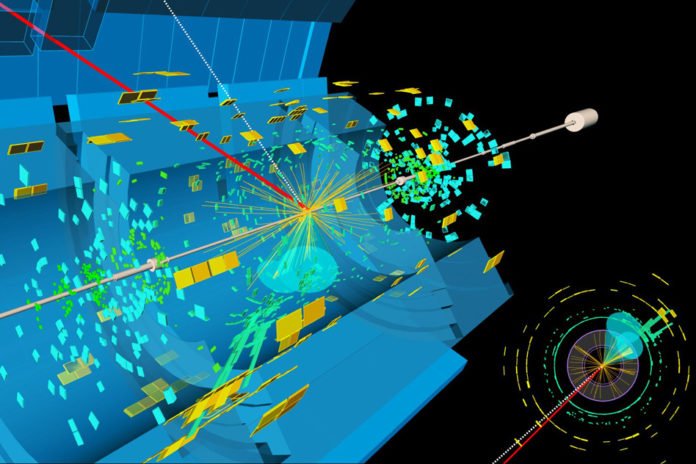The Large Hadron Collider (LHC) is the world’s biggest and most ground-breaking particle accelerator. It initially began up on 10 September 2008 and remains the most recent expansion to CERN’s accelerator complex. The LHC comprises a 27-kilometer ring of superconducting magnets with various quickening structures to support the energy of the particles along the way.
It’s been over a half a decade since researchers working with the Large Hadron Collider (LHC) figured out how to catch what they accepted was the elusive “God Particle” that would help integrate a few loose ends in our understanding of particle physics.
Now, physicists have made another announcement to add to the Higgs boson. They have mentioned the principal unambiguous observational fact of Higgs bosons decaying into a matter-antimatter combine of base quarks. Shockingly, the Higgs bosons decay frequently along these lines.
Physicists have identified the elementary particles rotting into two base quarks that appear to be extraordinary fleeting particles often show up as a result of high-energy molecule crashes. Scientists observed this phenomenon six years after the Higgs Boson was discovered.
Scientists made this discovery using the ATLAS and the CMS detectors, two major experiments designed to analyze the high-energy particle collisions generated by CERN’s Large Hadron Collider (LHC)—the largest, most powerful particle accelerator in the world.
Roughly 60 percent of all Higgs decays are to bottom quarks. This is the largest single decay channel of the Higgs boson. However, it is also the channel that has the largest background [noise from surrounding particles]. Depending on how you count it, it’s about a million times larger than the channels we used to discover the Higgs boson.
Scientists observed the electroweak force particle, the Z boson, and its decay to bottom quarks. They found that the Z boson going into bottom quarks.
MIT said, “I should stress that to see this distortion clearly we had to rely on technology that was at its infancy at the time of the Higgs boson discovery, including some of the most recent advancements in machine learning. In fact, only a few years ago it was taught in your standard particle physics class that it was impossible to observe the Higgs decays in some of these channels.”
“Following the Higgs boson discovery, we have learned a lot about how the Higgs mechanism gives mass to different particles. However, many would argue that after the Higgs boson discovery, high energy physics has gotten even more interesting because it is starting to look like our conventional view of particle physics doesn’t fit just right.”
“One of the best ways to test our view is by measuring the properties of the Higgs boson. The Higgs-to-bottom-quark decay is essential to this understanding because it allows us to directly probe the properties of Higgs and quark matter interactions and because of its large decay rate, which means we can measure the Higgs boson in all sorts of scenarios that are not possible with other decay modes.”
“This observation gives us a new and powerful tool to probe the Higgs boson. In fact, as part of this measurement, we were able to measure Higgs bosons with energies over twice the energy of the highest Higgs bosons previously observed.”
The discovery is a significant step towards understanding how the Higgs boson gives mass to all the fundamental particles in the universe. The discovery is a significant step towards understanding how the Higgs boson gives mass to all the fundamental particles in the universe.
